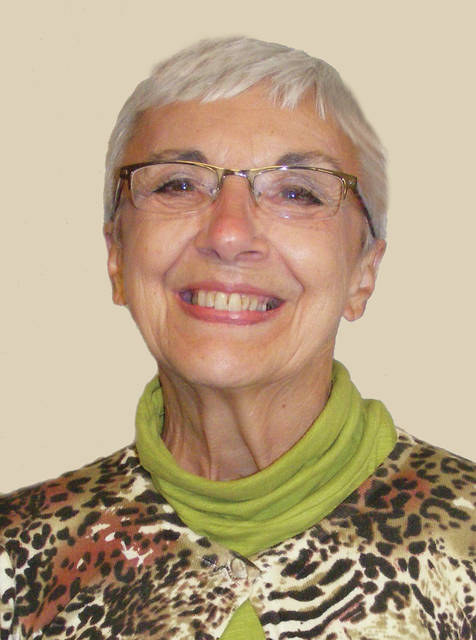
The beautiful stained glass windows that adorn Henry St. Clair Memorial Hall offer a spectacular welcome to the magnificent building. One of the the many reasons for rejoicing in actually being able to witness in-person a live performance when we recently attended the Greenville High School Theatre Club’s delightful performance of Alice In Wonderland was once again experiencing the wonder of Henry and Ella’s legacy, completed in 1912 and still glorious more than a century later. The windows symbolizing Literature, Labor, and Art, represent the values held by their benefactors which they wanted to impart to their community. However, to my mind the windows wondrously communicate the healing power to be found in joy, beauty, and light, and my spirits are always lifted by viewing them.
Shortly after we saw the play, I received my newsletter from the Art Institute of Chicago featuring an article entitled “Landscape in Light,” detailing the soon-to-be completed installation of a recently-donated massive stained glass window, complete with breathtaking photos of the sublime work. And once again, my mood was positively affected by a stunning work of art in stained glass, even when viewed in miniature on my computer screen.
Designed in 1917 for the Central Baptist Church of Providence, Rhode Island, the piece featuring a scene capturing New Hampshire’s Mount Chocorua at sunset was commissioned in honor of Frederick Hartwell, a figure of influence in Rhode Island business and finance in the closing decades of the nineteenth century. Tiffany was, of course, the preeminent source for leaded glass windows, known then and yet today for their radiant materials and technical brilliance. When interior designer Louis Comfort Tiffany (son of the man who created the renowned Tiffany & Company jewelry firm) was unable to find the types of glass he wanted for his design work, he founded the firm which became known for achieving spectacular color and textural effects not by treating the glass’s surface but within the medium itself, a technique known as “painting with glass.”
According to the AIC newsletter, “the luminous, naturalist windows produced under the firm’s name represent the work of many hands. The compositions were conceived by one or more designers — in this case, Agnes F. Northrop — but there were specialists across the firm who worked on each phase of the conceptual and material development of the glass: experimenting with glass formulas, making different types of sheet and cast glass, selecting specific pieces for each project, cutting them to fit the design, and uniting the pieces with strips of lead or copper soldered together.”
The article goes on to describe the meticulous work required to uninstall the 25-foot high scene, move it to the museum, then conserve, clean, reinforce and stabilize the entire surface, painstakingly documenting each panel to recreate an accurate image of the window which will soon be ready for public viewing. The Art Institute recognizes the legacy created by the Tiffany Studio’s team of designers and craftspeople who sought “innovative ways to realize this landscape in light” while creating this work of art, and intends for that legacy to live on through the collaborative ingenuity of its conservation and installation,.
In case you are wondering, no evidence exists to connect our local stained glass treasure to Tiffany studios, except for the opalescent glass used to create clouds which was thought to only be available from Tiffany. That fact does not diminish the beauty and worth of those panels, which have twice been lovingly restored during the past four decades. But as we continue to await encountering “the light at the end of the tunnel” while efforts to combat the COVID-19 virus continue, we can derive inspiration from amazing art that gains its awesome power from light. For myself, in addition to continue interacting with the local treasure endowed by the St. Clairs, another trip to Chicago might be required to fully take advantage of the benefits acquired through the simple act of viewing colored glass powered by light.





